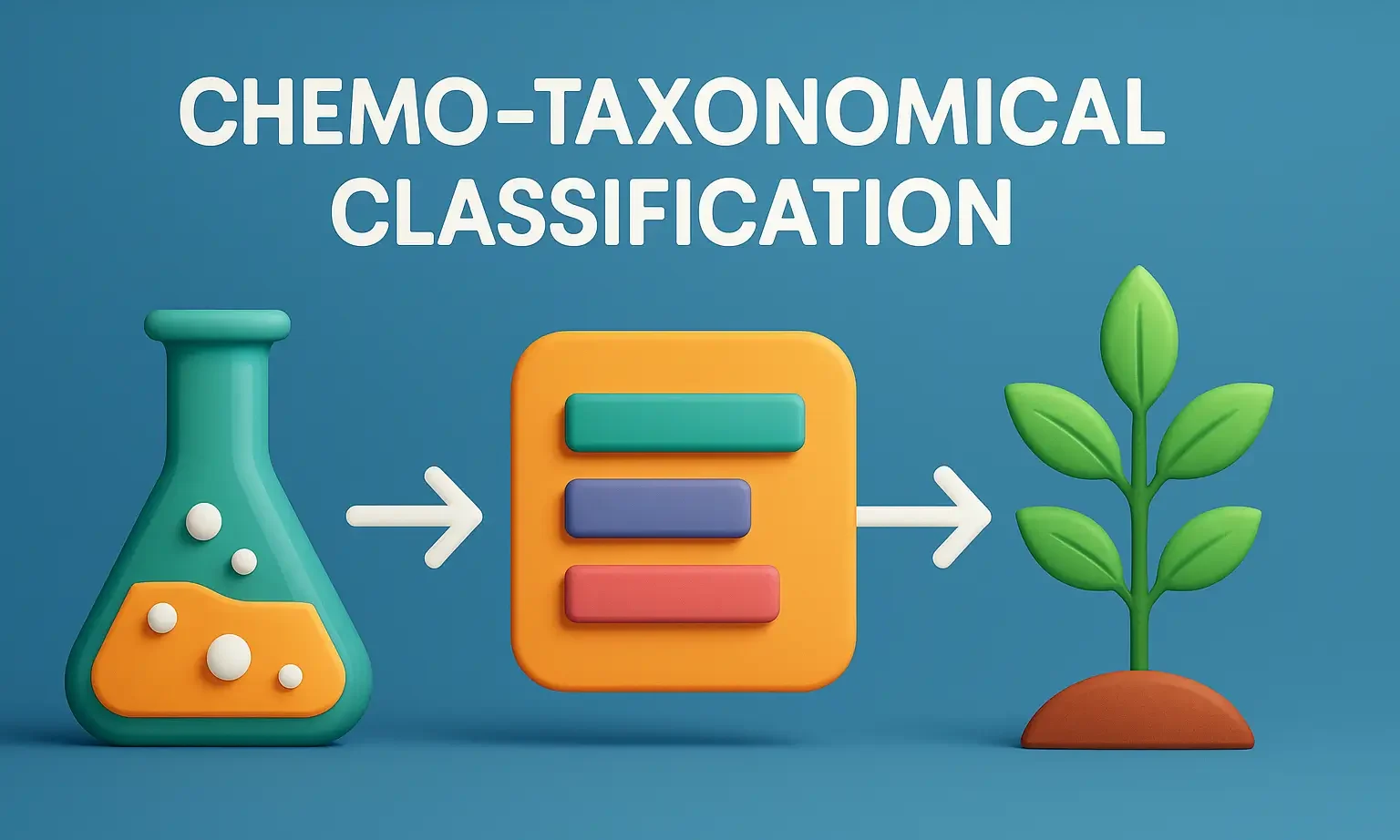- Definition: Chemo-Taxonomical Classification groups plants based on chemical constituents for systematic study.
- Importance: Chemo-Taxonomical Classification aids in identifying plant relationships and medicinal properties.
- This classification is based on the relationship between plant taxonomy and chemical constituents.
- It helps in understanding how plant species in the same family may produce similar types of chemical compounds.
Examples:
- Family: Papaveraceae → Produces alkaloids
- Papaver somniferum → Morphine (Analgesic)
- Family: Apocynaceae → Produces indole alkaloids
- Rauwolfia serpentina → Reserpine (Antihypertensive)
- Catharanthus roseus → Vinblastine (Anticancer)
- Family: Lamiaceae → Produces essential oils
- Mentha arvensis → Peppermint oil
- Ocimum sanctum → Holy Basil
Advantages:
- Helps in discovering new medicinal plants from related species.
- Useful for understanding biosynthesis of secondary metabolites.
Disadvantages:
- Requires expertise in botany and chemistry.
- Not practical for general pharmaceutical use.
Click Here to Watch the Best Pharma Videos

